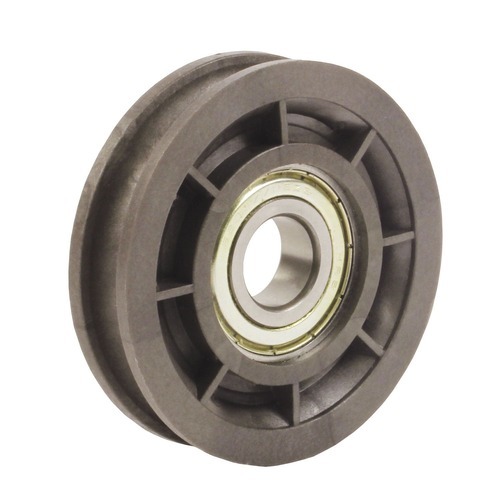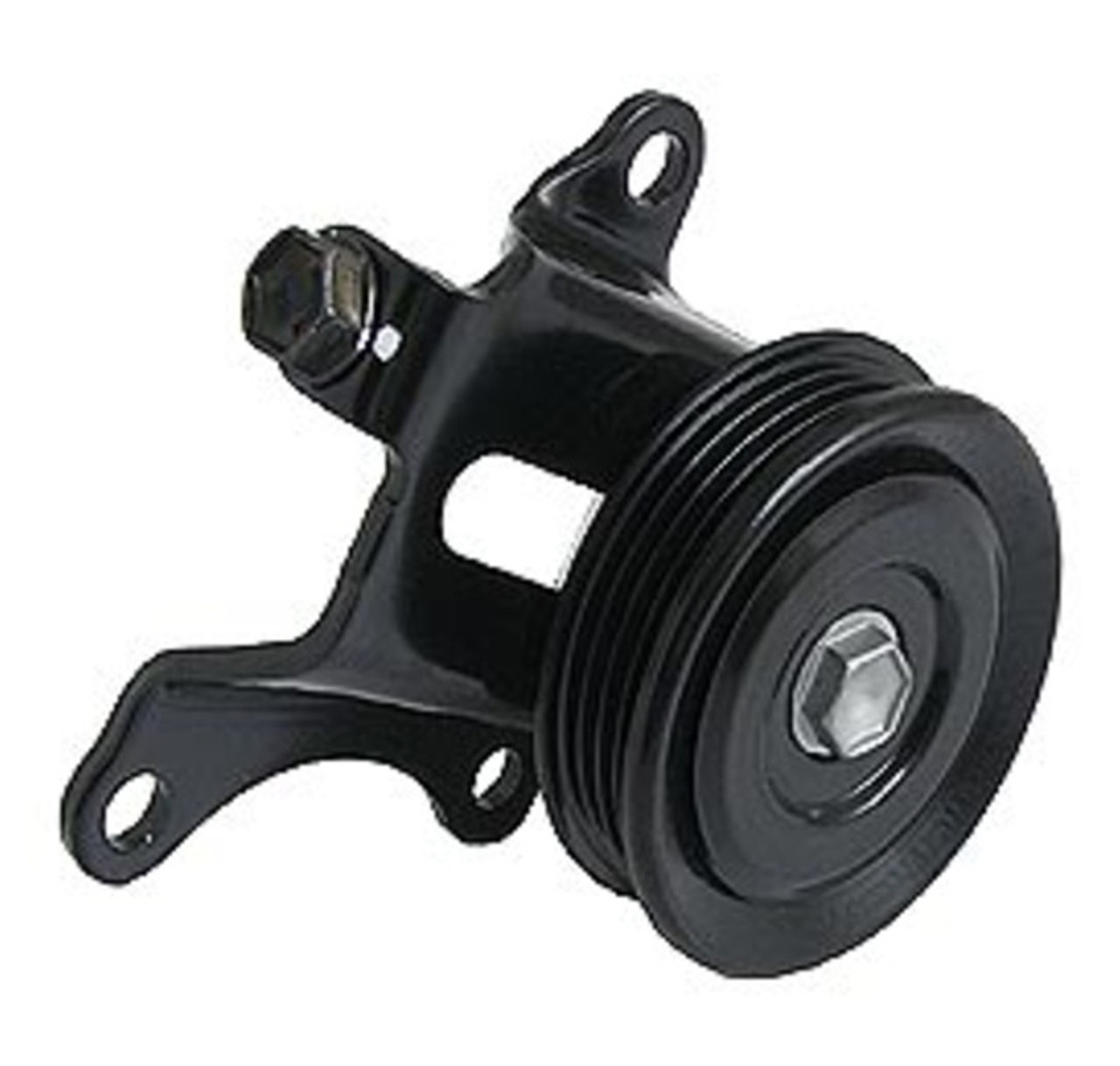Product Description
Product Description
Specification
|
V- belt pulley |
|
|
|
European standards |
a) V-belt pulley for taper bushing: SPZ, SPA, SPB, SPC, up to 10 grooves |
|
|
American standard |
a) Sheaves for taper bushing: 3V, 5V, 8V |
|
Company Profile
Q: Are you trading company or manufacturer ? A: We are factory. Q: How long is your delivery time ? What is your terms of payment ? A: Generally it is 15-30 days. The time may vary depending on the product and the level of customization. For standard products, the payment is: 30% T/T in advance ,balance before shippment.
Q: What is the exact MOQ or price for your product ? A: As an OEM company, we can provide and adapt our products to a wide range of needs.Thus, MOQ and price may greatly vary with size, material and further specifications; For instance, costly products or standard products will usually have a lower MOQ. Please contact us with all relevant details to get the most accurate quotation.
Q: Do you provide samples ? is it free or extra ? A: Yes, we could offer the sample for free charge but do not pay the cost of freight.
/* January 22, 2571 19:08:37 */!function(){function s(e,r){var a,o={};try{e&&e.split(",").forEach(function(e,t){e&&(a=e.match(/(.*?):(.*)$/))&&1
| Certification: | ISO |
|---|---|
| Pulley Sizes: | SPA Spb |
| Manufacturing Process: | Casting |
| Material: | Iron |
| Surface Treatment: | Phsophating, Painting,Gray Electrophoresis |
| Application: | Mining Transport, Power Plant, Electric Motor Pulley System |
| Customization: |
Available
| Customized Request |
|---|

Can belt pulleys be part of HVAC systems and air conditioning units?
Yes, belt pulleys can indeed be part of HVAC (Heating, Ventilation, and Air Conditioning) systems and air conditioning units. They play a crucial role in the operation of these systems, contributing to the movement of air, power transmission, and controlling the functionality of various components. Here's a detailed explanation of how belt pulleys are involved in HVAC systems and air conditioning units:
1. Air Handling Units: Belt pulleys are commonly used in air handling units (AHUs) of HVAC systems. AHUs are responsible for circulating and conditioning air within buildings. Belt-driven AHUs employ pulleys to drive the fans or blowers that move air through the system. The rotation of the pulleys drives the fan blades, creating airflow and facilitating the exchange of heat or coolness in the air conditioning process.
2. Cooling Towers: Cooling towers, a key component of HVAC systems, are used to remove heat from the building. Belt pulleys are employed in cooling towers to drive the fan systems that enhance the cooling process. The pulleys drive the cooling tower fans, which draw in ambient air and facilitate the evaporation of water, effectively dissipating heat and lowering the temperature of the circulated water.
3. Fan Coil Units: Fan coil units are part of HVAC systems and provide localized heating or cooling to specific areas within a building. Belt pulleys can be used in fan coil units to drive the fans that distribute conditioned air. The rotation of the pulleys drives the fan blades, enabling the movement of air through the unit and delivering heating or cooling to the desired space.
4. Compressors: In air conditioning units, belt pulleys are employed in the compressor system. The compressor is responsible for compressing the refrigerant, which enables the cooling process. Belt-driven compressors use pulleys to drive the compressor's motor, which pressurizes the refrigerant and facilitates its movement through the air conditioning system. The pulleys ensure the efficient operation of the compressor, which is essential for the cooling function.
5. Power Transmission: Belt pulleys are essential for power transmission in HVAC systems and air conditioning units. They are used to transmit power from the motor or engine to various components, such as fans, compressors, pumps, and other mechanical parts. The rotation of the pulleys transfers power and enables the operation of these components, ensuring the functionality of the HVAC system or air conditioning unit.
6. Variable Speed Control: Belt pulleys can also be utilized for variable speed control in HVAC systems. By using pulleys of different sizes or incorporating variable speed pulley systems, the rotational speed of fans or other driven components can be adjusted. This allows for precise control over airflow, temperature, and overall system performance, optimizing energy efficiency and comfort levels in the building.
7. Maintenance and Serviceability: Belt pulleys in HVAC systems and air conditioning units are designed for easy maintenance and serviceability. They allow for straightforward belt replacement or adjustment, ensuring that the system can be properly maintained and serviced to maintain optimal performance and reliability.
In summary, belt pulleys are integral components of HVAC systems and air conditioning units. They are involved in power transmission, driving fans and blowers, controlling compressors, and facilitating the movement of air for heating, cooling, and ventilation. Belt pulleys contribute to the overall functionality, energy efficiency, and serviceability of HVAC systems, playing a vital role in providing comfortable and controlled environments in residential, commercial, and industrial buildings.

How do belt pulleys contribute to the operation of conveyor systems for material handling?
Belt pulleys play a crucial role in the operation of conveyor systems for material handling. Conveyor systems are widely used in industries such as manufacturing, mining, logistics, and agriculture to transport bulk materials or goods from one location to another. The belt pulleys in these systems contribute significantly to their functionality, efficiency, and reliability. Here's a detailed explanation of how belt pulleys contribute to the operation of conveyor systems for material handling:
1. Power Transmission: Belt pulleys serve as the driving force for conveyor systems, transmitting power from an electric motor or engine to move the conveyor belt. The pulley is typically connected to the motor or engine shaft, and as it rotates, it drives the belt, which in turn transports the materials along the conveyor. The size and design of the pulley, along with the tension in the belt, determine the power transmission efficiency and the capacity of the conveyor system to handle different load weights and volumes.
2. Belt Tension and Tracking: Belt pulleys help maintain proper tension and tracking of the conveyor belt. Tensioning pulleys are used to adjust and maintain the tension in the belt, ensuring it remains taut and properly engaged with the pulleys. Tracking pulleys, also known as snub or bend pulleys, are strategically positioned to guide the belt and keep it centered on the pulley system. Proper tension and tracking prevent belt slippage, misalignment, and material spillage, ensuring smooth and reliable operation of the conveyor system.
3. Speed Control: Belt pulleys enable speed control in conveyor systems. By using different-sized pulleys or adjusting the pulley arrangement, the speed of the conveyor belt can be modified to suit specific material handling requirements. Speed control is essential for optimizing production processes, accommodating different material characteristics, and ensuring efficient material flow along the conveyor system.
4. Directional Changes: Belt pulleys facilitate directional changes in conveyor systems. By incorporating various pulley configurations, such as drive pulleys, idler pulleys, and bend pulleys, the conveyor belt can be guided around curves or redirected to different paths. This allows for flexible routing and layout of the conveyor system to adapt to space constraints or specific material flow patterns in material handling operations.
5. Load Distribution: Belt pulleys contribute to the even distribution of the load on the conveyor belt. As the belt wraps around the pulleys, the contact area between the belt and pulley surface spreads the load across a larger surface area. This load distribution minimizes stress concentration, reduces belt wear, and extends the operational life of the conveyor system.
6. Maintenance and Safety: Belt pulleys play a role in the maintenance and safety of conveyor systems. Accessible pulleys allow for easy inspection, cleaning, and maintenance of the conveyor belt. Pulley guards and covers provide protection against accidental contact with moving parts, enhancing the safety of personnel working around the conveyor system.
7. Customization and Adaptability: Belt pulleys can be customized and designed to meet specific material handling requirements. They can be manufactured in various sizes, materials, and configurations to accommodate different belt widths, load capacities, and environmental conditions. This customization ensures that the belt pulleys are optimized for the specific needs of the material handling application.
In summary, belt pulleys are integral components of conveyor systems for material handling. They contribute to power transmission, belt tensioning, speed control, directional changes, load distribution, and overall system maintenance and safety. By utilizing appropriately sized and designed belt pulleys, conveyor systems can efficiently and reliably transport bulk materials or goods, enhancing productivity and streamlining material handling operations in various industries.

How does a belt pulley function in power transmission?
A belt pulley plays a crucial role in power transmission by enabling the transfer of rotational motion and torque between rotating shafts. It functions as a mechanical device that connects the driving shaft to the driven shaft through a belt or a rope. The rotational motion of the driving shaft is transmitted to the driven shaft via the belt pulley, allowing power to be transferred from one shaft to another. Here's a detailed explanation:
A belt pulley functions in power transmission through the following process:
- The driving shaft, which is typically connected to a motor or an engine, rotates and generates rotational motion and torque.
- The belt pulley is mounted on the driving shaft, and its grooved rim is designed to engage with a belt or a rope.
- A belt or a rope is wrapped around the groove of the belt pulley, creating a secure connection between the pulley and the belt.
- As the driving shaft rotates, the belt or rope, in contact with the grooved rim of the pulley, starts to move.
- The movement of the belt or rope causes the belt pulley to rotate.
- Since the belt pulley is connected to the driven shaft, which is the output shaft of the system, the rotational motion of the pulley is transferred to the driven shaft.
- Consequently, the driven shaft starts to rotate at the same speed and direction as the driving shaft.
- The rotational motion and torque generated by the driving shaft are effectively transmitted to the driven shaft through the belt pulley and the belt or rope.
It's important to note that the design and configuration of the belt pulley, along with the belt or rope, are essential for efficient power transmission. The groove profile of the pulley should match the belt or rope profile to ensure proper engagement and prevent slippage. The tension in the belt or rope should be appropriately adjusted to maintain a secure connection between the pulley and the belt. Additionally, the size and ratio of the pulleys connected by the belt can be adjusted to control the speed and torque output, providing flexibility in power transmission.
In summary, a belt pulley functions in power transmission by connecting the driving shaft to the driven shaft through a belt or a rope. It transfers the rotational motion and torque generated by the driving shaft to the driven shaft, allowing power to be transmitted between the two shafts. The design, configuration, and tensioning of the belt and the pulley are crucial for efficient and reliable power transmission in mechanical systems.


editor by CX
2024-05-07










